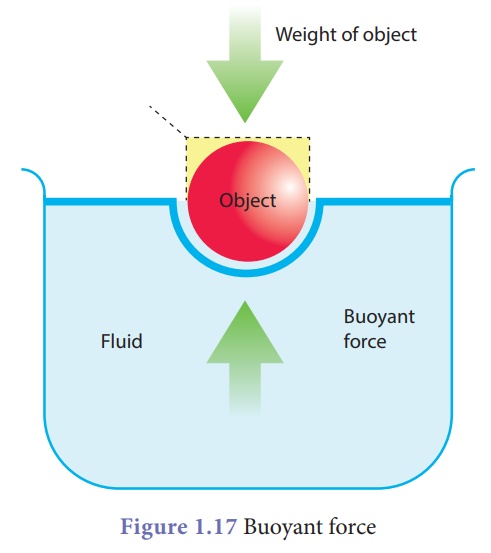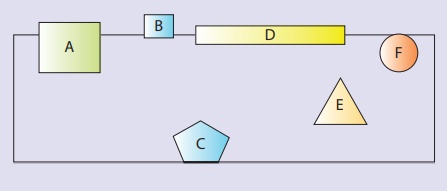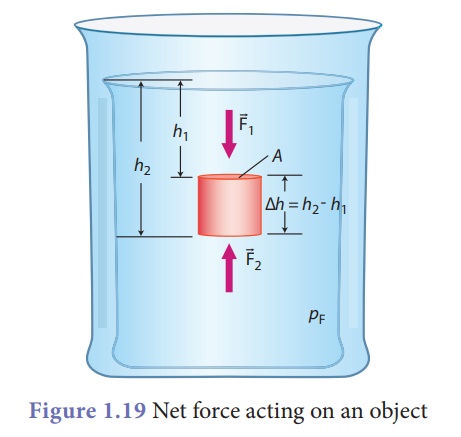Chapter: 9th Science : Fluids
Buoyancy
Buoyancy
We already saw that a
body experiences an upward force due to the fluid surrounding, when it is
partially or fully immersed in to it. We also saw that pressure is more at the
bottom and less at the top of the liquid. This pressure difference causes a
force on the object and pushes it upward. This force is called buoyant force
and the phenomenon is called buoyancy (Fig.1.17).

Most buoyant objects are
those with a relatively high volume and low density. If the object weighs less
than the amount of water it has displaced (density is less), buoyant force will
be more and it will float (such object is known as positively buoyant). But if
the object weighs more than the amount of water it has displaced (density is
more), buoyant force is less and the object will sink (such object is known as
negatively buoyant).
Cartesian diver
Cartesian diver is an
experiment that demonstrates the principle of buoyancy. It is a pen cap with
clay. The Cartesian diver contains just enough liquid that it barely floats in
a bath of the liquid; its remaining volume is filled with air. When pressing
the bath, the additional water enters the diver, thus increasing the average
density of the diver, and thus it sinks.

Examples 1.9
Six objects (A-F) are
in a liquid, as shown below. None of them are moving. Arrange them in order of
density, from lowest to highest.

Solution:
The more of an
object’s volume is above the water surface, the less dense it is. Object B must
therefore be the least dense, followed by D, A, and F. Object E is next,
because it is neutrally buoyant and equal in density to the liquid. Object C is
negatively buoyant because it is denser than the fluid.
Therefore the order of
density from lowest to highest is B,D,A,F, E,C.
Mathematical representation of Buoyant force
For an object submerged
in a fluid, there is a net force on the object, because the pressure at the top
and bottom of it are different.

We know that pressure, P = F/A
F = P A
Fbuoyancy = F2
– F1 = P2A2 – P1A1
Since area is same, A2 =
A1 = A
Therefore,
Fbuoyancy = P2A
– P1A
= A(P2 – P1)
Since, P = hρg,
Fbuoyancy = A(ρgh2
– ρgh1)
Aρg(h2 – h1) =
ρgA(h2 – h1)
Fbuoyancy = ρg(AΔh) = (ρfluid)
g (Vdisplaced)
Example 1.10
A golden crown has
been placed in a tub of water. The volume of water displaced is measured to be
1.50 liters. The density of water is 1000 kg m–3, or 1.000 kg L–1.
What is the buoyant force acting on the crown?
Solution:
The buoyant force is,
Fb = ρgV
First, we ensure that
the units used for volume are the same.
If 1 m3 =
1000 L, then 1.50 L = 0.00150 m3.
Fb = (1000
kg m–3)(9.80 m s-2)(0.00150 m3)
= 14.7 kg m s–2
= 14.7 N
The buoyant force
acting on the golden crown is 14.7 N.
Related Topics